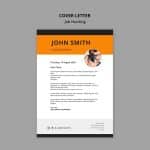Flying is, undoubtedly, the safest way to travel. It records the least fatalities among other means of transportation. It is also, undoubtedly, the fastest way to get to your destination.
If you are yet to experience your first travel by air, there are few things you should know and do to make it comfortable and an interesting affair. The following tips will guide your decisions.
- Buy travel insurance
For longer trips, it is necessary to have travel insurance cover. It covers for emergencies like airline bust, medical expenses, lost or stolen item and travel disruptions
- Exchange currency beforehand
If you are travelling to another country, there is a need for you to exchange your currency with a reputable currency exchange company before travelling. The currency exchange companies at the airport give exorbitant currency exchange rate, you may not want them to become your last resort.
- Take care of your health before travelling
If you have any medical condition, it will be better if you are certified fit for travel by your healthcare provider prior to your travel date. Also, if you are one of the people that get anxious about travelling, ensure you have sorted it out with your physician before embarking on the journey. Travelling with drugs requires that you find out the right medications to take on board flight because there is a restriction placed on certain medications.
- Packing your luggage
Ensure you put your stuff together a few days before the day of your flight. It will be better to make a list of all the required items you will need for your flight in order not to find yourself stranded and frustrated at the airport. Leaving the packing as the last thing to do could make you pack haphazardly, forgetting some items and putting others at the wrong places. Each item you are packing should be labelled with your name and phone number or an email address if a number is not available. This will make it easier for you to be reached in case a piece of an item gets lost along the line.
Also, double-check your itinerary, confirm your destination airport, your connection time to the local transport system, the time zone, plane tickets (check the spelling of your name on the tickets too), and so on.
- Dress comfortably
Clothes that make you comfortable is ideal for travelling. It will be bad if you are travelling a long distance in clothes that keep you uncomfortable throughout the journey.
- Ensure your luggage is not heavy
Each airline luggage regulation has a stipulated rule guiding the size of luggage. Typical size of luggage is around a maximum of 24 inches by 17 inches by 10 inches (24x17x10) with a weight limit of 50 pounds. This includes the wheels and handles of your luggage. You could as well weigh it at home before coming out. Similarly, it will be fair on your side if you do not haul a lot of items around to avoid paying fees on checked bags.
Ideally, a single sizable personal luggage that can fit under the seat opposite you is acceptable. To lock your bag, make sure you use a TSA (Transport Security Administration) approved lock.
- Arrival at the airport
It will do you well to get to the airport at least two hours before the scheduled time of departure if it is a domestic flight and three hours if it is an international flight. When you get to the airport, make sure you check-in and collect your boarding pass. Go through the security screening checkpoint and be at the departure gate about 30 minutes before the scheduled departure time of your flight. Depending on your itinerary, some airlines impose a time to stop accepting checking-ins and it is usually between 30 – 60 minutes before departure. Checked bags are no longer accepted around 45 – 60 minutes before departure.
- At the TSA security checkpoint
It is important that you keep your ID handy while packing your things. You will need to show it when checking in for your flight as well as at the TSA security checkpoint, together with your boarding pass. The moment you pass the first hurdle, you will be required to put all your items, including your footwear, outerwear and content of your pocket, in a bin that is put in an X-ray machine for screening. As the screening of your luggage is going on, you will walk through a screening machine as well to the other side where you will collect your luggage. There, you will find yourself at the departure terminal of the airport. There may be extra screening measures if the screening machine detects any unusual thing.
- About to board the airplane
Your boarding pass contains the details about the departure gate of your aeroplane. For further clarification, each airport has large screens that show a list of departure times and gate number of each flight. If there is any modification in your flight time or gate number, you will be updated via mobile app. Passengers are usually divided into boarding groups and when it is time to board the plane, the gate attendant will call each boarding group.
- On the plane
The moment you get to the plane, place your luggage either under the seat opposite you or in the overhead bin. If it luggage that needs to be handy, then under the opposite seat is ideal for your luggage. Buckle your seatbelt across your lap before the takeoff. There is the flight crew who will be available throughout the journey and will take care of everything you need to know or do in the airplane. Your electronics should be in flight mode too.
Items You Need in Your Travel Bag
There are rules set by the Transport Security Administration (TSA) on the items that are fit for travel and those you will do well to leave behind.
- Your documents for the trip
Your wallet, passport, identity card, flight tickets, and other itineraries, are not meant for your travel box. Keep them where they will be handy and accessible for the journey.
- Valuable items
Ensure your valuables like a laptop, jewellery, camera, phone, and other expensive luxuries are kept with you all the time. There are usually records of thefts at the airport, even though the airport and airline officials are trying their best to stop or minimize it. Anything that will give you an extra headache to travel with might as well be kept back home.
- Water
The little water offered to you on the plane may not be enough for you throughout the journey. It will be good if you can fill a water bottle with water and bring along with you. If possible, use a collapsible water bottle because it takes up less space.
- Your medication
Your drugs (mostly over the counter drugs) should be packed in your handbag or backpack instead of your luggage. You might need to take it during your flight and may not be able to get hold of it. Or, your luggage might get lost and it becomes problematic to get hold of your drugs at the appropriate time.
- Sweatshirt
You will need a sweatshirt or jacket in the airplane. Hang it over your arm to save space for other items. You will need it in the airplane to keep you warm because of the chilly nature of the cabin.
- Phone accessories
You will need to keep your phone fully charged because you will regularly need it before and after you board your flight. Your earpiece is also necessary if you are someone who is in love with music or audiobooks.
- Personal effect
Underwear, toothbrush, toothpaste, facial wipes, and so on are very necessary and you might have a need of them once you step out of the plane. You will have to save yourself a whole lot of rummaging through your suitcase by keeping them in your carry-on bag. You will also need a change of clothes that will be suitable for the current weather in your destination.
- A snack
Pack your own lunch or snack; just ensure it is wrapped and non-liquid so as to pass through the security. It is also cheaper for you instead of buying snacks sold at the airport.
- You do not need to pack large liquids
The limit to the number of liquids in your carry-on is 3.4 ounces so as to fit in a quart-size bag. This is according to the directives by the TSA.
- Download travel apps before leaving
This will help you to save your data while on transit. Also, buy an international calling plan via your service provider before leaving your country. To avoid paying the heavy phone bill, put off data roaming on your phone.
Carry-on Rules for Travelling by Air
There have been increased security measures imposed on every piece of carry-on luggage. The strict measures were put in place by the Transportation Safety Administration (TSA), detailing what passengers are allowed to carry in the carry-on and the quantity to be carried while aboard the airplane. Failure to compliance may lead to your denial to board the airplane.
- Number of bags
Each passenger is permitted to take only one piece of carry-on luggage and one personal item which could be a backpack, a purse, laptop or anything else.
- Size of the bag
The standard or international size for carry-on luggage is 45 linear inches (length, breadth and height of the luggage in totality). You could buy a bag of that size in the market.
- Weight of the bag
The standard weight limit for carry-on bags should not be more than 40 pounds. It will be advisable for you to weigh it at home before bringing it to the airport.
- Banned items
Carry-on liquids should not exceed 3.4-ounce container that could comfortably be in a quart-size bag. Other restricted items include sharp objects, flammables, explosives, hazardous items.
- Exceptions
Breastmilk, baby food and medicine not exceeding the standard quantity of liquids could be carried. Items like umbrellas, medical equipment, child safety seats, hats, coats, reading materials, food and related items could also be carried with you.
In conclusion, do not be scared of your first flight. Ensure you follow the appropriate procedure, do the right thing and have fun while on transit to your destination. Have a safe trip as you board your first flight.









